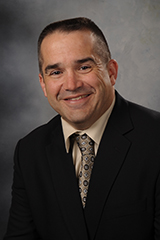February 23, 2021
Where Do I Fit In?

Whenever there is change, people want to know where they fit into that change. It is only natural. Recently a question was posed regarding our entering the world of digital extension education delivery. The question was, “If we go all virtual, will that eliminate the need for agents and program assistants/managers?” The rationale for this question was: Couldn’t a specialist just do all of the education virtually from his office in Manhattan or a regional center?
Let’s get straight to the answers: No and no!
First off, let’s answer a very simple question. When did anybody say we were going all virtual in our extension education efforts? Just two years ago, we had 1.1 million direct education contacts, and the vast majority of those were face-to-face contacts. In fact, we were worried about learners who only got their education by digital means. We were missing out on a lot of educational opportunities because of a lack of virtual extension education delivery.
Fast forward to the past year. We had a rather lengthy period where virtual was our only option, and we found that we could reach learners using virtual delivery methods. In fact, we reached people that we never reached before or had lost a long time ago. Many of these virtual extension education efforts, as we showcased in our Extension Updates, were led and taught by agents. Others were conducted by specialists in conjunction with agents and program assistants/managers. Once the virtual-only period was over, we found ourselves engaged in virtual activities, safe face-to-face activities, and safe hybrid delivery systems. Specialists and agents alike were involved in all styles of education delivery methods.
When things return to “normal,” I anticipate a big initial swing to a demand for face-to-face education delivery. Then things will moderate with those who originally preferred face-to-face education desiring that mode of delivery, and those who preferred or needed virtual delivery will, once again, desire that delivery method. We need to be able to reach both types of learners to do our jobs effectively.
Next, let’s look at this from the educational-programming process perspective. There is way more to successful education delivery than just who stands in front of the room, delivering the content. The process typically includes local needs analysis, educational-program development, marketing and promoting an educational program to learners, program delivery to the learners, program follow-up with the learners (for example, one-on-one advising/consulting about the program content), program evaluation, program reporting, and communicating our impact.
All of those educational-program process steps are critical in great programming, regardless of whether it is face-to-face delivery, digital delivery, or hybrid delivery. In our pre-COVID days, when the vast majority of our programming was face to face, we had agents and specialists involved in each of those phases, to varying degrees. That does not change with virtual methods being added to our program-delivery quiver.
So, where does an individual extension professional fit in? I will answer that with two questions. These questions are the same questions regardless of educational-program delivery method. First, where do your skills best serve in the educational programming process? Second, where do your learners most need you in their education programming process? When you answer those two questions, you no longer have to ask "Where do I fit in?"